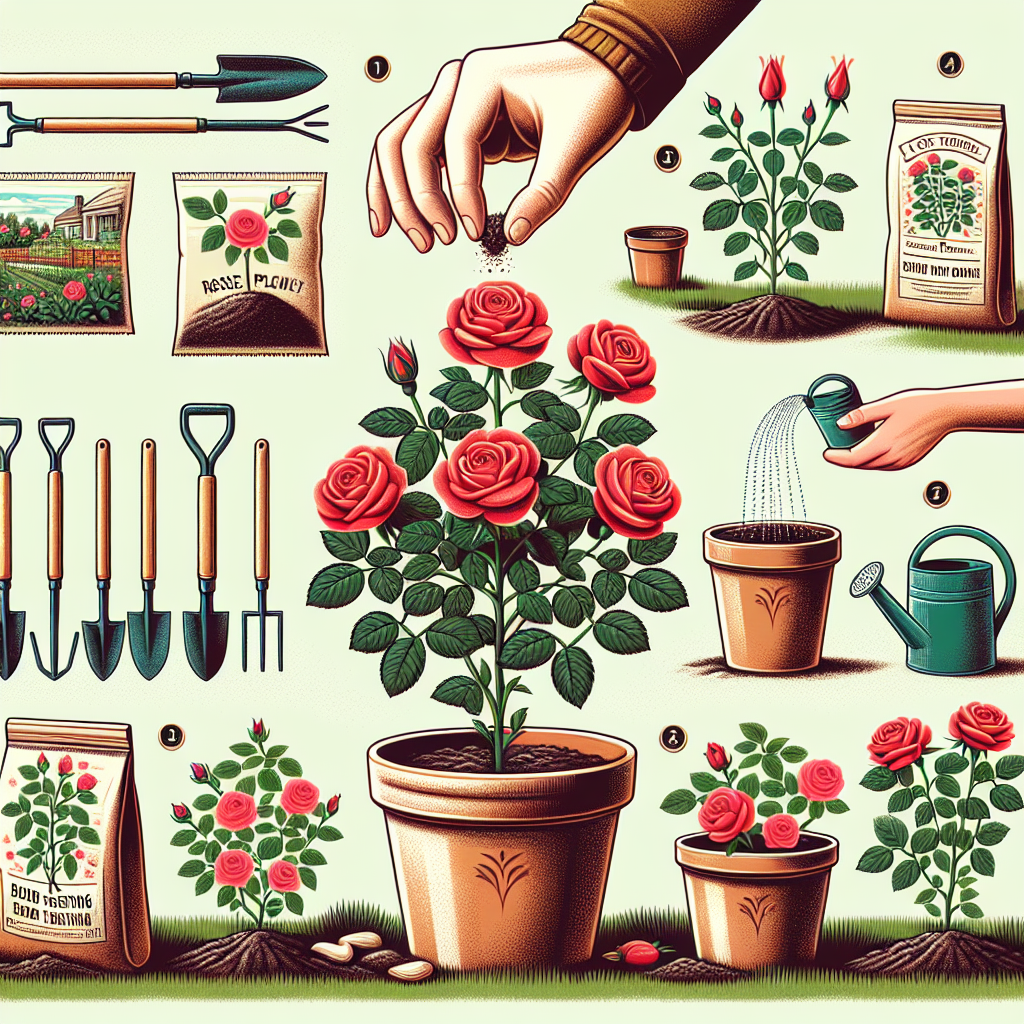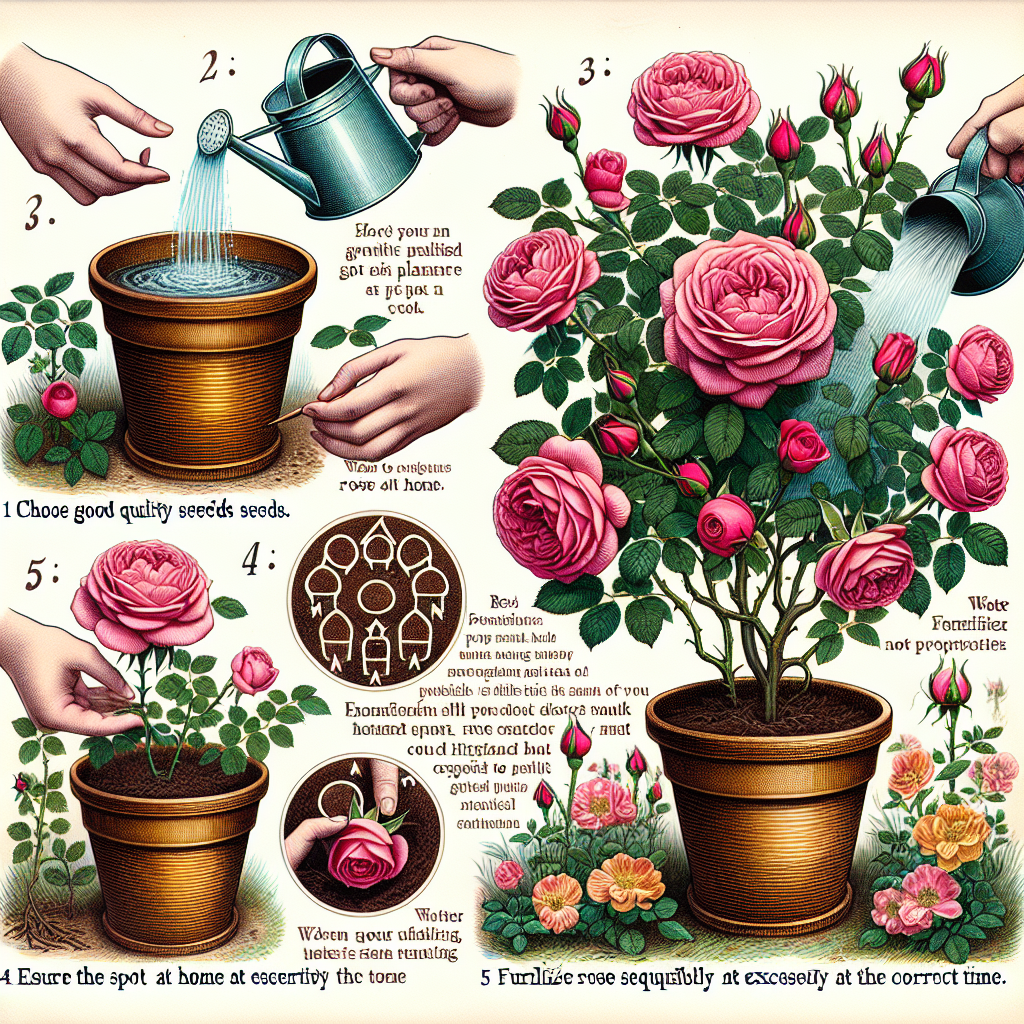
Roses are one of the most beloved flowers in the world, symbolizing love, beauty, and passion. Growing roses at home can be a rewarding experience, offering both aesthetic pleasure and a sense of accomplishment. This comprehensive guide will walk you through the essential steps to successfully grow roses in your garden, from selecting the right variety to maintaining healthy plants.
Choosing the Right Rose Variety
The first step in growing roses at home is selecting the right variety. Roses come in various types, each with its own unique characteristics and growing requirements. Here are some popular rose varieties to consider:
- Hybrid Tea Roses: Known for their large, single blooms and long stems, making them ideal for cutting.
- Floribunda Roses: These roses produce clusters of flowers and are known for their continuous blooming.
- Grandiflora Roses: A cross between Hybrid Tea and Floribunda, offering large blooms and clusters.
- Climbing Roses: Perfect for trellises and arbors, these roses can grow quite tall and provide a stunning vertical display.
- Miniature Roses: Ideal for small spaces or container gardening, these roses are compact and produce small blooms.
Consider Your Climate
When choosing a rose variety, it’s essential to consider your local climate. Some roses are more tolerant of heat, while others thrive in cooler conditions. Research the hardiness zone of your area and select roses that are well-suited to your climate. For example, the USDA Plant Hardiness Zone Map can be a helpful resource in determining which roses will thrive in your region.
Preparing the Soil
Roses require well-draining soil rich in organic matter. Proper soil preparation is crucial for the health and growth of your roses. Follow these steps to prepare the soil:
Test the Soil
Before planting, test the soil’s pH level. Roses prefer a slightly acidic to neutral pH range of 6.0 to 7.0. You can purchase a soil testing kit from a garden center or send a sample to a local agricultural extension office for analysis.
Amend the Soil
Based on the soil test results, amend the soil as needed. If the soil is too acidic, add lime to raise the pH. If it’s too alkaline, add sulfur to lower the pH. Additionally, incorporate organic matter such as compost, well-rotted manure, or peat moss to improve soil structure and fertility.
Planting Roses
Once you’ve selected the right variety and prepared the soil, it’s time to plant your roses. Follow these steps for successful planting:
Choose the Right Location
Roses need at least six hours of direct sunlight each day. Choose a location that receives ample sunlight and has good air circulation to prevent disease. Avoid planting roses near large trees or shrubs that may compete for nutrients and water.
Planting Bare-Root Roses
Bare-root roses are typically planted in early spring while they are still dormant. Follow these steps:
- Soak the roots in water for several hours before planting.
- Dig a hole large enough to accommodate the roots without crowding.
- Create a mound of soil in the center of the hole and spread the roots over it.
- Backfill the hole with soil, ensuring the bud union (the swollen area where the rose was grafted) is about 1 inch above the soil level.
- Water thoroughly to settle the soil and eliminate air pockets.
Planting Container-Grown Roses
Container-grown roses can be planted at any time during the growing season. Follow these steps:
- Water the rose thoroughly before planting.
- Dig a hole twice as wide and as deep as the container.
- Remove the rose from the container and gently loosen the roots.
- Place the rose in the hole, ensuring the top of the root ball is level with the surrounding soil.
- Backfill the hole with soil and water thoroughly.
Watering and Fertilizing
Proper watering and fertilizing are essential for healthy rose growth. Here’s how to keep your roses well-nourished:
Watering
Roses need consistent moisture, especially during the growing season. Water deeply and thoroughly, ensuring the soil is evenly moist but not waterlogged. Avoid overhead watering, as wet foliage can lead to disease. Instead, water at the base of the plant using a soaker hose or drip irrigation system.
Fertilizing
Roses are heavy feeders and benefit from regular fertilization. Follow these guidelines:
- Apply a balanced, slow-release fertilizer in early spring as new growth begins.
- Fertilize again after the first bloom cycle to encourage continuous flowering.
- Use a high-phosphorus fertilizer in late summer to promote root development and prepare the plant for winter.
- Avoid fertilizing after late summer, as this can encourage new growth that may not harden off before winter.
Pruning Roses
Pruning is essential for maintaining the shape, health, and productivity of your rose plants. Here’s how to prune your roses effectively:
When to Prune
The best time to prune roses is in late winter or early spring, just as new growth begins. This timing allows you to remove any winter damage and shape the plant before the growing season starts.




